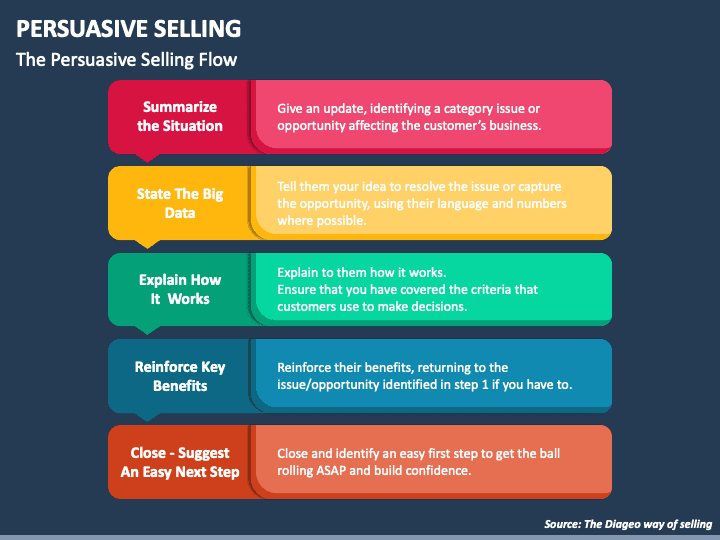To create persuasive PowerPoint presentations, employ concise messaging, compelling visuals, storytelling elements, and audience engagement techniques to effectively communicate your message and sway opinions.
Persuasion is the act of influencing someone’s beliefs, attitudes, or behaviors through communication. It is a powerful tool that is used in various fields such as marketing, sales, politics, and even everyday interactions. Understanding the psychology behind persuasion can help individuals become more effective communicators and achieve their desired outcomes.
The psychology of persuasion is rooted in the principles of social psychology, which examines how individuals’ thoughts, feelings, and behaviors are influenced by others. Persuasion involves understanding human cognition, emotions, and social dynamics to craft messages that are compelling and influential.
Understanding the Power of PowerPoint Presentations
PowerPoint presentations have become a staple in many professional settings due to their ability to convey information in a visually appealing and organized manner. They offer several benefits when it comes to persuasion.
Firstly, PowerPoint presentations can enhance comprehension and retention of information. Visual aids such as charts, graphs, and images can help individuals better understand complex concepts and remember key points. Additionally, the use of bullet points and concise text can make information more digestible for the audience.
To create an effective PowerPoint presentation, it is important to keep a few tips in mind. Firstly, keep the design simple and clean. Avoid cluttering slides with excessive text or distracting animations. Use high-quality visuals that are relevant to the content being presented. Additionally, use a consistent color scheme and font throughout the presentation for a cohesive look.
There are many examples of successful PowerPoint presentations that have effectively persuaded audiences. For example, TED Talks often utilize PowerPoint slides to support the speaker’s message and engage the audience. These presentations combine compelling visuals with concise text to create a memorable experience for viewers.
The Art of Storytelling: How to Use Narrative to Persuade
Storytelling is a powerful tool in persuasion as it engages emotions and captures attention. Stories have been used for centuries to convey messages and influence beliefs. When used effectively, storytelling can make a persuasive message more relatable, memorable, and impactful.
A compelling story typically consists of several key elements. Firstly, it should have a clear structure with a beginning, middle, and end. This helps the audience follow along and understand the message being conveyed. Secondly, the story should have relatable characters that the audience can connect with.
This helps create an emotional connection and makes the story more memorable. Lastly, the story should have a central conflict or problem that is resolved by the end. This creates a sense of resolution and satisfaction for the audience.
To incorporate storytelling into your message, start by identifying a relevant and relatable story that supports your main point. Use vivid language and descriptive details to paint a picture in the audience’s mind. Additionally, consider using personal anecdotes or real-life examples to make the story more authentic and relatable.
Using Visuals to Enhance Your Message
Visuals are a powerful tool in persuasion as they can convey information quickly and effectively. They can help capture attention, enhance understanding, and make a message more memorable. There are several types of visuals that can be used in presentations.
Charts and graphs are useful for presenting data and statistics in a visually appealing way. They can help illustrate trends, comparisons, and relationships between variables. Infographics are another type of visual aid that combines text and visuals to present information in a concise and engaging manner.
When creating visuals, it is important to keep them simple and easy to understand. Use clear labels and avoid cluttering the visual with unnecessary information. Choose colors that are visually appealing and enhance readability. Additionally, consider using images or illustrations that are relevant to the content being presented.
There are many examples of successful visual aids that have enhanced persuasion efforts. For example, Apple’s product launches often include visually stunning slides that showcase the features and benefits of their products. These visuals help create excitement and desire among the audience.
The Importance of Body Language and Nonverbal Communication
Body language and nonverbal communication play a crucial role in persuasion. Research has shown that a significant portion of communication is conveyed through nonverbal cues such as facial expressions, gestures, and posture. These cues can influence how a message is perceived and received by the audience.
Body language can affect persuasion in several ways. Firstly, it can convey confidence and credibility. Maintaining good posture, making eye contact, and using appropriate gestures can help establish trust with the audience. Secondly, body language can enhance engagement and interest. Using expressive facial expressions and gestures can help captivate the audience’s attention and make the message more compelling.
To use body language effectively, it is important to be aware of your own nonverbal cues and how they may be perceived by others. Practice maintaining good posture, making eye contact, and using appropriate gestures. Additionally, pay attention to the body language of your audience and adjust your own nonverbal cues accordingly.
There are many examples of successful persuasion that have utilized body language effectively. For example, charismatic leaders often use confident body language to inspire trust and motivate their followers. Additionally, public speakers who use expressive gestures and facial expressions can captivate their audience and make their message more memorable.
Building Credibility and Trust with Your Audience
Credibility and trust are essential in persuasion as they help establish the speaker as a reliable source of information. Without credibility and trust, it is unlikely that an audience will be persuaded to change their beliefs or behaviors.
Building credibility and trust starts with establishing expertise in the subject matter being discussed. This can be done by showcasing relevant qualifications, experience, or knowledge. Additionally, it is important to be transparent and honest in your communication. Avoid exaggerations or misleading statements that could undermine your credibility.
Another way to build credibility and trust is through social proof. This involves providing evidence that others have been persuaded by your message or have benefited from your product or service. Testimonials, case studies, and reviews can all be used to demonstrate social proof.
There are many examples of successful persuasion that have relied on credibility and trust. For example, in the field of marketing, celebrity endorsements are often used to build credibility and trust with consumers. When a trusted celebrity promotes a product, it can influence consumer beliefs and behaviors.
Tailoring Your Message to Your Audience’s Needs and Interests
Tailoring your message to your audience is crucial in persuasion as it helps make the message more relevant and relatable. Different audiences have different needs, interests, and values, so it is important to understand these factors and adjust your message accordingly.
Audience analysis is an important step in tailoring your message. This involves gathering information about your audience’s demographics, preferences, and beliefs. This information can help you understand what motivates your audience and what they are likely to respond to.
To tailor your message effectively, consider using language and examples that resonate with your audience. Use their preferred terminology and address their specific concerns or pain points. Additionally, consider incorporating visuals or stories that are relevant to their experiences or interests.
There are many examples of successful persuasion that have been tailored to specific audiences. For example, political campaigns often tailor their messages to different demographics based on their values and priorities. By addressing the specific concerns of each group, politicians can increase their chances of persuading voters.
The Power of Emotions: How to Evoke Feelings to Inspire Action
Emotions play a powerful role in persuasion as they can influence how individuals perceive and respond to a message. Emotionally charged messages are more likely to capture attention, evoke empathy, and inspire action.
To evoke emotions effectively, it is important to understand the emotional needs and desires of your audience. Consider what emotions are likely to resonate with them and how these emotions can be tied to your message. For example, if you are trying to persuade individuals to donate to a charity, you may evoke feelings of compassion or empathy by sharing stories of those in need.
There are several techniques that can be used to evoke emotions in persuasion. One technique is the use of vivid language and descriptive details that paint a picture in the audience’s mind. Another technique is the use of personal anecdotes or real-life examples that elicit emotional responses.
There are many examples of successful persuasion that have relied on emotional appeal. For example, advertisements often use emotional storytelling to connect with consumers and inspire them to purchase a product or support a cause. By evoking emotions such as happiness, nostalgia, or fear, advertisers can create a strong emotional connection with their audience.
Overcoming Resistance and Objections
In persuasion, it is common for individuals to have objections or resistance to the message being presented. These objections can be due to skepticism, conflicting beliefs, or fear of change. Overcoming resistance and objections is crucial in order to persuade individuals to change their attitudes or behaviors.
To overcome resistance and objections, it is important to address them directly and provide evidence or counterarguments that refute them. Anticipate potential objections and prepare responses in advance. Use facts, statistics, or testimonials to support your position and address any concerns or doubts that may arise.
Another effective technique for overcoming resistance is the use of social proof. If individuals see that others have been persuaded by your message or have benefited from your product or service, they may be more likely to overcome their own objections.
There are many examples of successful persuasion that have overcome resistance and objections. For example, in sales, salespeople often anticipate common objections from potential customers and prepare responses in advance. By addressing these objections proactively, salespeople can increase their chances of closing a sale.
Creating a Call to Action: Encouraging Your Audience to Take the Next Step

A call to action is a crucial component of persuasion as it encourages the audience to take a specific action or make a decision. Without a clear call to action, individuals may be unsure of what they are expected to do and may not take any action at all.
To create an effective call to action, it is important to be clear, concise, and specific. Clearly state what action you want the audience to take and provide any necessary instructions or information. Use language that is persuasive and motivating, such as “Act now” or “Don’t miss out.”
Additionally, it can be helpful to provide incentives or rewards for taking the desired action. This can create a sense of urgency or excitement and increase the likelihood that individuals will follow through.
There are many examples of successful persuasion that have included a clear call to action. For example, in marketing, advertisements often include a call to action such as “Buy now” or “Sign up today.” By providing a clear next step, marketers can increase the chances of individuals taking action.
Measuring Success: Evaluating the Effectiveness of Your Persuasion Techniques
Measuring success is an important step in persuasion as it allows individuals to evaluate the effectiveness of their techniques and make improvements if necessary. Without measuring success, it is difficult to know whether your persuasion efforts are achieving the desired outcomes.
There are several metrics that can be used to evaluate the effectiveness of persuasion techniques. One metric is the conversion rate, which measures the percentage of individuals who take the desired action after being exposed to a persuasive message. Another metric is the change in attitudes or beliefs, which can be measured through surveys or interviews.
To measure success, it is important to set clear goals and objectives for your persuasion efforts. Determine what outcomes you are hoping to achieve and identify the metrics that will be used to evaluate these outcomes. Regularly track and analyze these metrics to assess the effectiveness of your techniques.
There are many examples of successful persuasion that have been evaluated for their effectiveness. For example, in political campaigns, polling data is often used to measure the impact of persuasive messages on voter attitudes and intentions. By tracking changes in public opinion, politicians can adjust their strategies and tactics accordingly.
Conclusion:
Persuasion is a powerful tool that can be used to influence beliefs, attitudes, and behaviors. By understanding the psychology behind persuasion and utilizing effective techniques, individuals can become more persuasive communicators and achieve their desired outcomes.
Throughout this article, we have explored various aspects of persuasion, including the use of PowerPoint presentations, storytelling, visuals, body language, credibility and trust, audience analysis, emotional appeal, overcoming objections, creating a call to action, and measuring success. Each of these elements plays a crucial role in effective persuasion.
It is important to continuously improve and refine your persuasion techniques. Experiment with different strategies and tactics to see what works best for your audience. Pay attention to feedback and adjust your approach accordingly. By continuously learning and adapting, you can become a more persuasive communicator and achieve greater success in your persuasion efforts.
In conclusion, I encourage readers to apply these techniques in their own persuasion efforts. Whether you are a marketer trying to sell a product, a leader trying to inspire your team, or an individual trying to influence others in everyday interactions, the principles of persuasion can be applied to achieve your goals. By understanding the psychology behind persuasion and utilizing effective techniques, you can become a more influential communicator and achieve greater success in your endeavors.



Leave a Reply